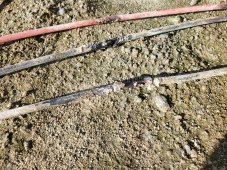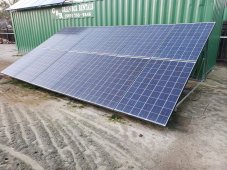CarlCruzin
New Member
I wonder if this would be a good solution..... https://www.safiery.com/scotty-1.5kw-12-48v-canbus-bi-directional-dc-to-dcI used it so I could bypass the inverter and out the grid directly to the RV. I stopped using it because I didn't see the need for me. It worked good. I actually have it for sale on the forum.
Yeah my pump was on an 80a breaker, and only draws around 60a, but the spike was enough to pull voltage down below 6v.
Quite expensive, but it also does double duty by allowing the alternator to charge a 48v battery pack.





